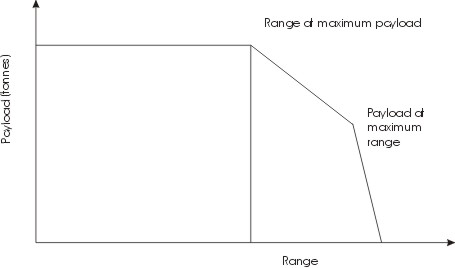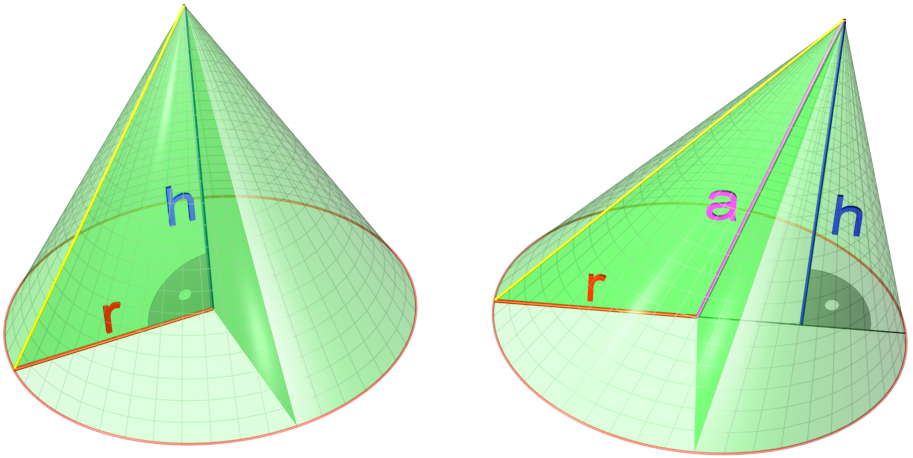|
Payload Fairing
A payload fairing or nose fairing is a nose cone used to protect a launch vehicle, spacecraft payload (air and space craft), payload against the impact of dynamic pressure and aerodynamic heating during launch through an atmosphere. An additional function on some flights is to maintain the cleanroom environment for precision instruments. Once outside the atmosphere the fairing is jettisoned, exposing the payload to outer space. The standard payload fairing is typically a cone-cylinder combination, due to aerodynamic considerations, although other specialized fairings are in use. The type of fairing which separates into two halves upon jettisoning is called a clamshell fairing by way of analogy to the Bivalve shell, bifurcating shell of a clam. In some cases the fairing may enclose both the payload and the upper stage of the rocket, such as on Atlas V and Proton M. If the payload is attached both to the Booster rocket, booster's core structures and to the fairing, the payload ma ... [...More Info...] [...Related Items...] OR: [Wikipedia] [Google] [Baidu] |
Payload Fairing Jettison
Payload is the object or the entity that is being carried by an aircraft or launch vehicle. Sometimes payload also refers to the carrying capacity of an aircraft or launch vehicle, usually measured in terms of weight. Depending on the nature of the flight or mission, the payload of a vehicle may include cargo, passengers, flight crew, munitions, scientific instruments or experiments, or other equipment. Extra fuel, when optionally carried, is also considered part of the payload. In a commercial context (i.e., an airline or air freight carrier), payload may refer only to revenue-generating cargo or paying passengers. A payload of ordnance carried by a combat aircraft is sometimes alternatively referred to as the aircraft's warload. For a rocket, the payload can be a satellite, space probe, or spacecraft carrying humans, animals, or cargo. For a ballistic missile, the payload is one or more warheads and related systems; their total weight is referred to as the throw-weight. The ... [...More Info...] [...Related Items...] OR: [Wikipedia] [Google] [Baidu] |
Truncated Cone
In geometry, a cone is a three-dimensional figure that tapers smoothly from a flat base (typically a circle) to a point not contained in the base, called the '' apex'' or '' vertex''. A cone is formed by a set of line segments, half-lines, or lines connecting a common point, the apex, to all of the points on a base. In the case of line segments, the cone does not extend beyond the base, while in the case of half-lines, it extends infinitely far. In the case of lines, the cone extends infinitely far in both directions from the apex, in which case it is sometimes called a ''double cone''. Each of the two halves of a double cone split at the apex is called a ''nappe''. Depending on the author, the base may be restricted to a circle, any one-dimensional quadratic form in the plane, any closed one-dimensional figure, or any of the above plus all the enclosed points. If the enclosed points are included in the base, the cone is a solid object; otherwise it is an open surface, ... [...More Info...] [...Related Items...] OR: [Wikipedia] [Google] [Baidu] |
Long March 2E
The Long March 2E, also known as the Chang Zheng 2E, CZ-2E and LM-2E, was a Chinese orbital carrier rocket from the Long March 2 family. The Long March 2E was a three-stage carrier rocket that was designed to launch commercial communications satellites into geosynchronous transfer orbit. Launches took place from launch complex 2 at the Xichang Satellite Launch Center. The Long March 2E made its maiden flight on 16 July 1990. However, the rocket had compatibility flaws with the American-made satellites that caused one launch failures and one partial failure in just 7 missions. The rocket was retired on 28 December 1995 in favor of the Long March 3B. The Long March 2E forms the basis of the Long March 2F, used to launch crewed Shenzhou missions. The booster rockets have also been used on the Long March 3B and Long March 3C. Launches The Long March 2E made its maiden flight on 16 July 1990 and made 7 launches in total. All of the failures were caused by excessive vibration. T ... [...More Info...] [...Related Items...] OR: [Wikipedia] [Google] [Baidu] |
Atlas SLV-3
The Atlas SLV-3, or SLV-3 Atlas was an American expendable launch system derived from the SM-65 Atlas / SM-65D Atlas missile. It was a member of the Atlas family of rockets. The Atlas SLV-3 was a stage and a half rocket, built as a standardized replacement for earlier Atlas launch systems, which had been derived from the various Atlas missiles. Most space launcher variants of the Atlas up to 1965 were derived from the D-series Atlas ICBM with custom modifications for the needs of the particular mission. The SLV-3 would use a standardized configuration based on the Atlas D missile for all launches with the exception of different widths for the top of the rocket depending on the upper stage being flown. The SLV-3 had thicker gauge tank walls to support the weight of upper stages as well as upgraded engines and removal of unneeded ICBM hardware such as retrorockets. Although the main engines had greater thrust, the verniers were detuned slightly in the interest of improved ISP ... [...More Info...] [...Related Items...] OR: [Wikipedia] [Google] [Baidu] |
Gemini 9A
Gemini 9A (officially Gemini IX-A) With Gemini IV, NASA changed to Roman numerals for Gemini mission designations. was a 1966 crewed spaceflight in NASA's Gemini program. It was the seventh crewed Gemini flight, the 15th crewed American flight and the 23rd spaceflight of all time (includes X-15 flights over ). The original crew for Gemini 9, command pilot Elliot See and pilot Charles Bassett, were killed in a crash on February 28, 1966, while flying a T-38 jet trainer to the McDonnell Aircraft plant in St. Louis, Missouri to inspect their spacecraft. Their deaths promoted the backup crew, Thomas P. Stafford and Eugene Cernan, to the prime crew. The mission was renamed Gemini 9A after the original May 17 launch was scrubbed when the mission's Agena Target Vehicle was destroyed after a launch failure. The mission was flown June 3–6, 1966, after launch of the backup Augmented Target Docking Adaptor (ATDA). Stafford and Cernan rendezvoused with the ATDA, but were unable to d ... [...More Info...] [...Related Items...] OR: [Wikipedia] [Google] [Baidu] |
Augmented Target Docking Adapter
The Agena Target Vehicle (; ATV), also known as Gemini-Agena Target Vehicle (GATV), was an uncrewed spacecraft used by NASA during its Gemini program to develop and practice orbital space rendezvous and docking techniques, and to perform large orbital changes, in preparation for the Apollo program lunar missions. The spacecraft was based on Lockheed Aircraft's Agena-D upper stage rocket, fitted with a docking target manufactured by McDonnell Aircraft. The name 'Agena' derived from the star Beta Centauri, also known as Agena. The combined spacecraft was a -long cylinder with a diameter of , placed into low Earth orbit with the Atlas-Agena launch vehicle. It carried about of propellant and gas at launch, and had a gross mass at orbital insertion of about . The ATV for Gemini 6 failed on launch on October 25, 1965, which led NASA to develop a backup: the Augmented Target Docking Adapter (ATDA), a smaller spacecraft consisting of the docking target with an attitude control propul ... [...More Info...] [...Related Items...] OR: [Wikipedia] [Google] [Baidu] |
Gemini 9 Docking Target
Gemini most often refers to: * Gemini (constellation), one of the constellations of the zodiac * Gemini (astrology), an astrological sign Gemini may also refer to: Science and technology Space * Gemini in Chinese astronomy, the Gemini constellation in Chinese astronomy * Project Gemini, the second US crewed spaceflight program * Gemini Observatory, consisting of telescopes in the Northern and Southern Hemispheres * Gemini Planet Imager, an instrument for observing extrasolar planets Computing * Gemini (chatbot), a chatbot developed by Google ** Gemini (language model), a multimodal large language model from Google * Gemini (protocol), an Internet protocol providing access to primarily textual documents in Gemini space * SCO Gemini, a UnixWare/OpenServer merger project by SCO * Gemini chip, an updated version of the Apple Computer chip Mega II * Xiaomi Mi 5 (codename Gemini), an Android phone * Gemini PDA, an Android/Linux PDA/phone with a keyboard * Yahoo! Gemini, a former nam ... [...More Info...] [...Related Items...] OR: [Wikipedia] [Google] [Baidu] |
Neutron (rocket)
Neutron is a partially reusable medium-lift two-stage launch vehicle under development by Rocket Lab. Announced on 1 March 2021, the vehicle is designed to be capable of delivering a payload of to low Earth orbit in a partially reusable configuration, and will focus on the growing megaconstellation satellite delivery market. The vehicle is expected to be operational sometime in 2025. It uses LOX and liquid methane propellant on both stages of the vehicle. Design An earlier design of Neutron (March 2021), included a rocket tall with a -diameter payload fairing. Rocket Lab stated that they intended for the first stage of the vehicle to be reusable, with landings planned on a floating landing platform downrange in the Atlantic Ocean called Return On Investment. During the company's earnings call in February 2025, a plan to modify the offshore barge were unveiled. On 2 December 2021, Rocket Lab unveiled a revised design for Neutron, featuring a tapered shape with a maximum ... [...More Info...] [...Related Items...] OR: [Wikipedia] [Google] [Baidu] |
Rocket Lab
Rocket Lab Corporation is a Public company, publicly traded aerospace manufacturer and List of launch service providers, launch service provider. Its Rocket Lab Electron, Electron orbital rocket launches Small satellite, small satellites, and has launched 63 times as of April 2025. A Sub-orbital spaceflight, sub-orbital Electron variant called HASTE (Hypersonic Accelerator Suborbital Test Electron) serves other needs. The company also supplies satellite components including Star tracker, star trackers, Reaction wheel, reaction wheels, Solar cell, solar cells and arrays, Satellite radio, satellite radios, separation systems, as well as flight and ground software. The Expendable launch system, expendable Electron rocket first Rocket, launched in May 2017. In August 2020, the company launched its first Rocket Lab Photon, Photon satellite. The company built and operates satellites for the Space Development Agency, part of the United States Space Force. In May 2022, the company attemp ... [...More Info...] [...Related Items...] OR: [Wikipedia] [Google] [Baidu] |
Elon Musk
Elon Reeve Musk ( ; born June 28, 1971) is a businessman. He is known for his leadership of Tesla, SpaceX, X (formerly Twitter), and the Department of Government Efficiency (DOGE). Musk has been considered the wealthiest person in the world since 2021; ''Forbes'' estimates his net worth to be . Born to a wealthy family in Pretoria, South Africa, Musk emigrated in 1989 to Canada. He received bachelor's degrees from the University of Pennsylvania in 1997 before moving to California, United States, to pursue business ventures. In 1995, Musk co-founded the software company Zip2. Following its sale in 1999, he co-founded X.com, an online payment company that later merged to form PayPal, which was acquired by eBay in 2002. That year, Musk also became an American citizen. In 2002, Musk founded the space technology company SpaceX, becoming its CEO and chief engineer; the company has since led innovations in reusable rockets and commercial spaceflight. Musk joined ... [...More Info...] [...Related Items...] OR: [Wikipedia] [Google] [Baidu] |
STP-2
The Space Test Program (STP) is the primary provider of spaceflight for the United States Department of Defense (DoD) space science and technology community. STP is managed by a group within the Advanced Systems and Development Directorate, a directorate of the Space and Missile Systems Center of the United States Space Force. STP provides spaceflight via the International Space Station (ISS), piggybacks, secondary payloads and dedicated launch services. Past activities STP has actually been in existence for 50 years as of 2019, with several thousand launches it has been responsible for. For example, the initial experiments that led to the modern Global Positioning System (GPS) satellite constellation were STP-launched projects. 2001 During August 2001, STP conducted two successful activities using the Space Shuttle and ISS. STS-105 delivered and successfully deployed the Materials International Space Station Experiment (MISSE) externally on the ISS. MISSE was a passive m ... [...More Info...] [...Related Items...] OR: [Wikipedia] [Google] [Baidu] |
The Verge
''The Verge'' is an American Technology journalism, technology news website headquarters, headquartered in Lower Manhattan, New York City and operated by Vox Media. The website publishes news, feature stories, guidebooks, product reviews, consumer electronics news, and podcasts. The website was launched on November 1, 2011, and uses Vox Media's proprietary multimedia publishing platform Chorus. In 2014, Nilay Patel was named editor-in-chief and Dieter Bohn executive editor; Helen Havlak was named editorial director in 2017. ''The Verge'' won five Webby Awards for the year 2012 including awards for Best Writing (Editorial), Best Podcast for ''The Vergecast'', Best Visual Design, Best Consumer Electronics Site, and Best Mobile News App. History Origins Between March and April 2011, up to nine of ''Engadget''s writers, editors, and product developers, including editor-in-chief Joshua Topolsky, left AOL, the company behind that website, to start a new gadget site. The other ... [...More Info...] [...Related Items...] OR: [Wikipedia] [Google] [Baidu] |







